As the speedo arced past 130mph, it suddenly stuck me that the approaching right-handed kink, which on every previous visit to Aston’s Gaydon test track I’d regarded as a benign sort of crooked straight, had rapidly turned into a bona fide corner, the kind of obstacle for which you must lose speed or regret it.
Yet we did not slow. Instead, the velocity of our Aston Martin One-77 kept rising at a rate I dimly calculated was more than quite spirited cars can manage below 60mph. This kink was about to turn into a crisis.
Video: See Steve Cropley riding in the Aston Martin One-77
Luckily, I remember thinking, the track was very wide: we could take a line. This, as the relentless acceleration continued, provided a second or two’s comfort. Then, right at the jaws of the bend, we stopped accelerating and I glanced again at the speedo – now just short of 160mph. A smooth suggestion of right lock and the car began to corner hard, then harder. Under what were now mighty cornering forces, it refused to roll, staying mysteriously, immaculately on line.
Dimly, over the vocal V12, I was aware of Pirelli scuffing well-worn bitumen for maybe five or six seconds: this kink was now a long bend. Then we were straight and accelerating strongly again, back on the power and heading for 200mph (we managed 192) until it was time for the carbon-ceramic pads to grab their discs and wash off 150mph in a couple of hundred yards so that we could negotiate the 180deg hairpin not far ahead. In the rush I missed much detail, but there was just time to note that my driver, Chris Porritt, chief engineer of the One-77 programme and a quality wheelman, had made his last gearchange, fifth to sixth, at a cool 180mph. We were in a potent car.
Extraordinary day
I had known all along that this was going to be an extraordinary day. Today, I was to do what no hack in Europe had so far managed: get my backside into the £1.4 million Aston One-77. The car is considered so exclusive that the company principal, Ulrich Bez, had decreed that no stranger would so much as ride in it until the 77-strong customer body had bought its cars, lest they be tainted or discouraged by something they read in the press.
Even today there would be no driving, but I was being offered the next best thing: a ride on the limit with the guy who had been involved in this car’s creation from the beginning, who knew, and could justify, its every design and engineering feature, and who could handle its 7.3-litre, 750bhp potential with an aplomb I was never going to acquire in a mere day at the wheel. Or a month…
When the car was commissioned roughly four years ago, says Porritt, the One-77 team was given two clear goals. First, it was to build the best, fastest, most technically advanced and most radical Aston the company could create, almost without regard to cost. Second, it was to investigate design routes and key technology that Aston might use in its next-generation models.
The One-77 recipe might herald from four years ago, but it could have been written today. For the familiar sheet aluminium VH platform of your existing models, substitute a race-style, hand-laid carbonfibre chassis tub of the utmost rigidity. Combine structures in honeycomb-reinforced carbon and aluminium at the extremities to carry the suspension and transaxle (rear) and the suspension and engine (front), and protect them with deformable ‘crash cans’. Use your existing forged suspension wishbones – because they’re good – but devise a new inboard mounting system for the race-quality spring and damper units that will allow the bonnet, and thus the whole car, to be lower, while also reducing unsprung mass.
Aerospace technology
Clothe your chassis with handmade aluminium panels using a bonding process created by Airbus for aeroplanes. Create the car’s many metal parts (suspension pick-ups, bell cranks, engine mounts, bracketry) by machining most of them from aluminium billet. Then send your 48-valve V12 engine to Cosworth for a makeover that includes expansion to 7.3 litres (by boring and stroking) and a power hike, telling them not to give it back until it can make more than 700bhp and weighs 10 per cent less. Then rejoice when it comes back punching out a reliable 750bhp – with 553lb ft of torque – and weighs not 10 but 15 per cent less, because they’ve eliminated the old-tech shrunk-in cylinder liners in favour of a spray-on coating for the bores.
Have your designers create an Aston look that is instantly different, with a lower, heavily waisted body, huge rear haunches, small overhangs, cabin greenhouse set further back, new-tech lights, and update and simplify the interior that, in other Astons, has been looking old for years. Make sure every metal trim part is machined to minute accuracy from billet, and every surface speaks of quality. Assembly the whole thing with Swiss-watch precision, in what looks like an operating theatre for cars and using hand-picked staff of reassuring age and experience, and what you have is an Aston One-77, ready to sell to your best-heeled and most deserving six or seven dozen clients at £1.4 million plus VAT, even in a recession. Will it sell? The score is already on the board. When we called last week, Aston was about to deliver its 65th of 77 cars. One right-hand drive version was left, over which half a dozen potential owners were said to be competing. Make a desirable product, says Porritt, and it will sell.
When you approach the car, you’ll instantly notice how different its proportions are from Aston Martins you know. The One-77 is similar in length to the DBS and DB9, but the wheelbase is 50mm longer and the whole car is lower. Chalk this down to the influence of those inboard front suspension units. They, along with a new dry sump system for the engine, allow the engine to be further back and 100mm lower in the car. The driver is 100mm lower, too, but the car itself is only 80mm lower because there’s 20mm more cabin headroom. The cabin is even further back towards the rear axle – this is a pure two-seater – and its wasp-waisted body allows very easy access.
Interior: unmistakably Aston
Open the butterfly doors and you see an interior that could only be an Aston’s (low seats, lots of double-stitched leather, big ‘waterfall’ centre stack) and you might recognise the jewel-like speedo and tacho, adopted from other models. Your seat is very low and deep, with high side bolsters, but you can still see well. The fascia presents no cliff face, more a kind of ‘sunny upland’ treatment, one trend that’s surely coming to future Astons.
The starter whirrs seamlessly, then the V12 bursts raucously into life. In the first seconds of running, it is clear the dominant sound in this car is always going to be the engine. You hear mechanical sizzles and induction roar, and once the engine passes 2200rpm in sport mode, you hear most of the exhaust, too. In normal (or town mode) the car’s management computer keeps the butterflies shut to a more respectable 4500rpm. But it’s vocal. Get used to it.
The One-77 uses a rear-mounted six-speed automated manual gearbox (not a dual-clutch system) because it is lighter and much easier to package in-unit with the diff. And Aston feels it has done enough to make the ’box work well with the mammoth torque it must handle. So it proves. You can have smooth, slurred changes at medium-low revs in town; quick-shifts under full noise. There’s a ‘drive auto’ setting that will please some owners but I couldn’t help noticing Porritt never used it.
The suspension is very firm but the car always stays flat, courtesy of the long wheelbase and very wide tracks. The car is just short of two metres wide, and the wheels go right to the extremities, but when Porritt deploys the full 750bhp, it is easy to see why this suspension must impose serious discipline. It delivers immense thrust off the line and there is a big head-toss at the first-to-second gearchange. I’m forced way back into my seat, but the thing I’m really noticing is how the wheels are still trying to spin as we select third, and would do were it not for the hard-pressed traction control. This is another of those cars in the Bugatti-McLaren mould which can always, literally, go faster than you desire.
Gentle is an incongruous word
Handling? Sticky tyres on huge wheels, ultra-wide tracks, zero overhangs and most mass located well inside the wheelbase make this car easy to set up as a neutral handler, and that’s what Porritt and his team have done. The car much prefers to stay on line, but you can make it break away any time with power – as long as the traction control is off. Deploy the handsome folding rear wing (or it pops up by itself at 80mph) and the car becomes a gentle understeerer in long fast bends, says the engineer.
I find ‘gentle’ an incongruous word for this car, in any context. The car is a complete surprise to me, for its sheer single-mindedness. The noise is dominant; the ride is always at least firm. Your handling of the car must always be dominant, never apologetic. I had expected this Aston, strictly for squillionaires, to be a classic old gentleman’s GT, hugely potent but, above all, polite and refined. But this is not the case. The Aston One-77 is raw. It is made for delivering ultimate performance in the front-mid-engined mould. It is a driving challenge, never a pushover. My respect for squillionaires – or at least for 77 of them – has just gone up.

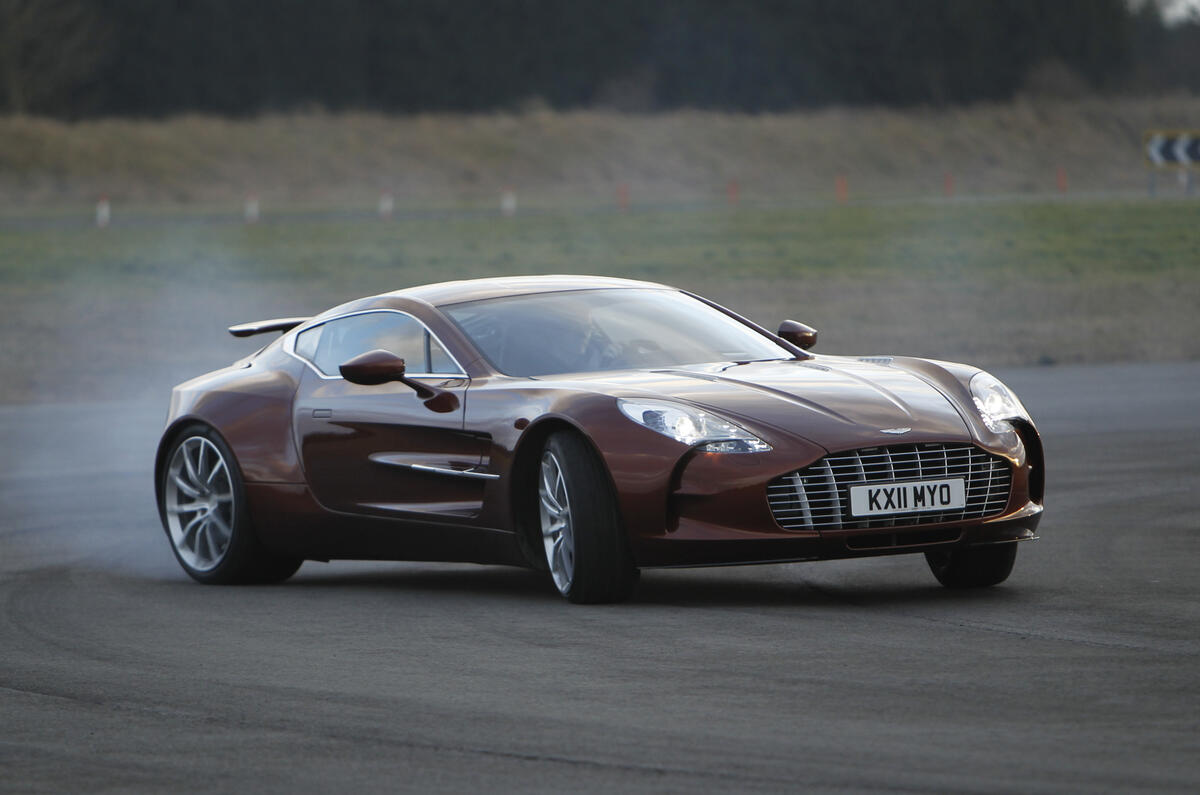
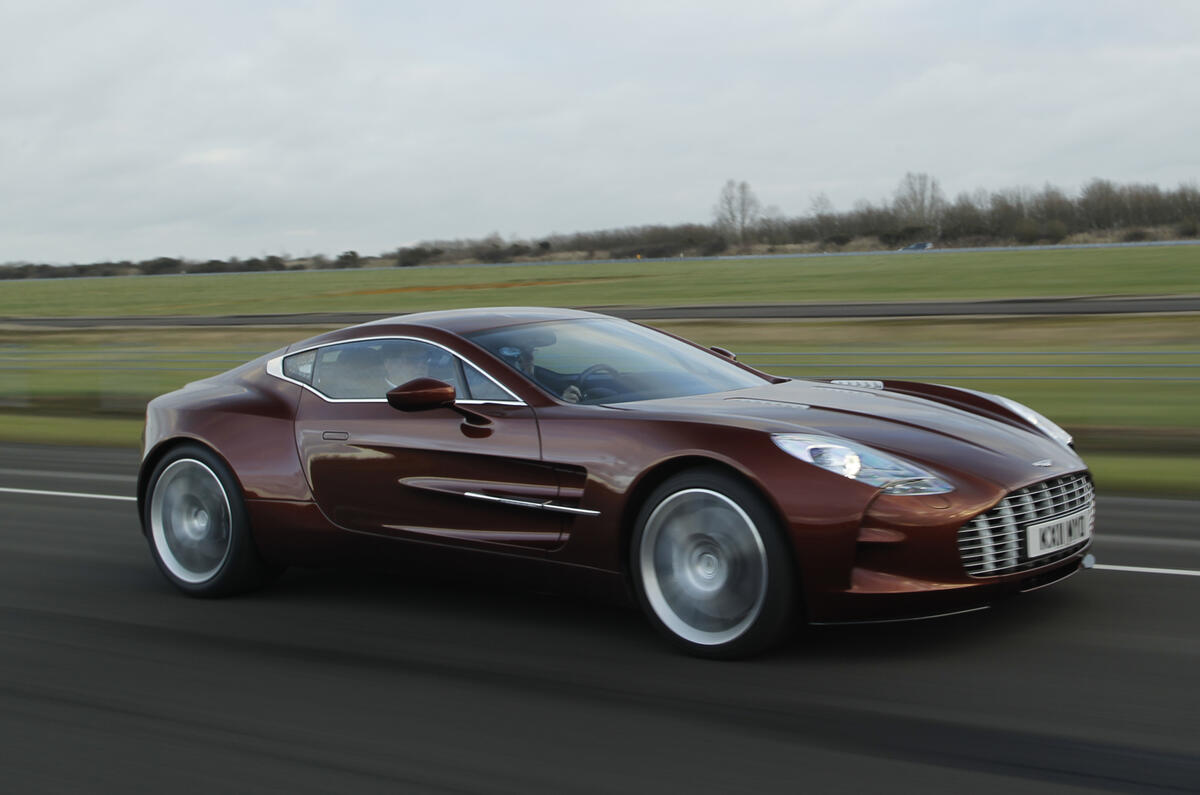
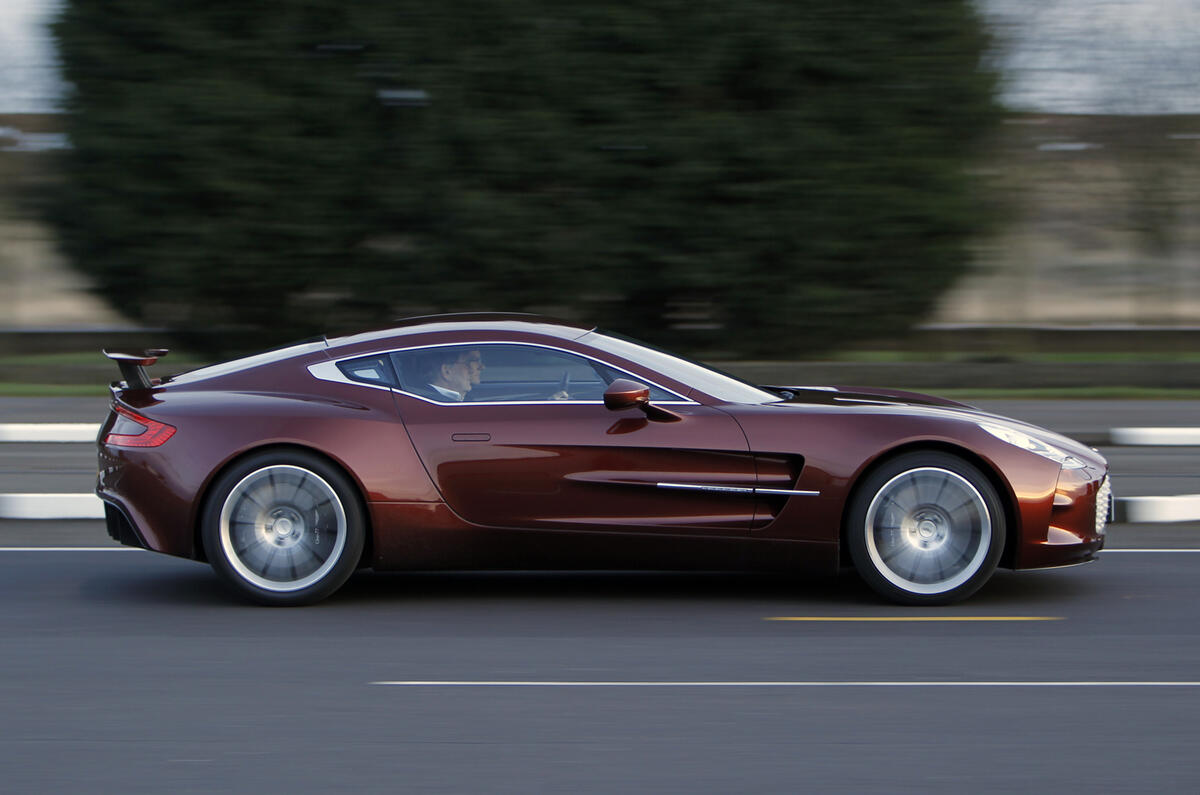

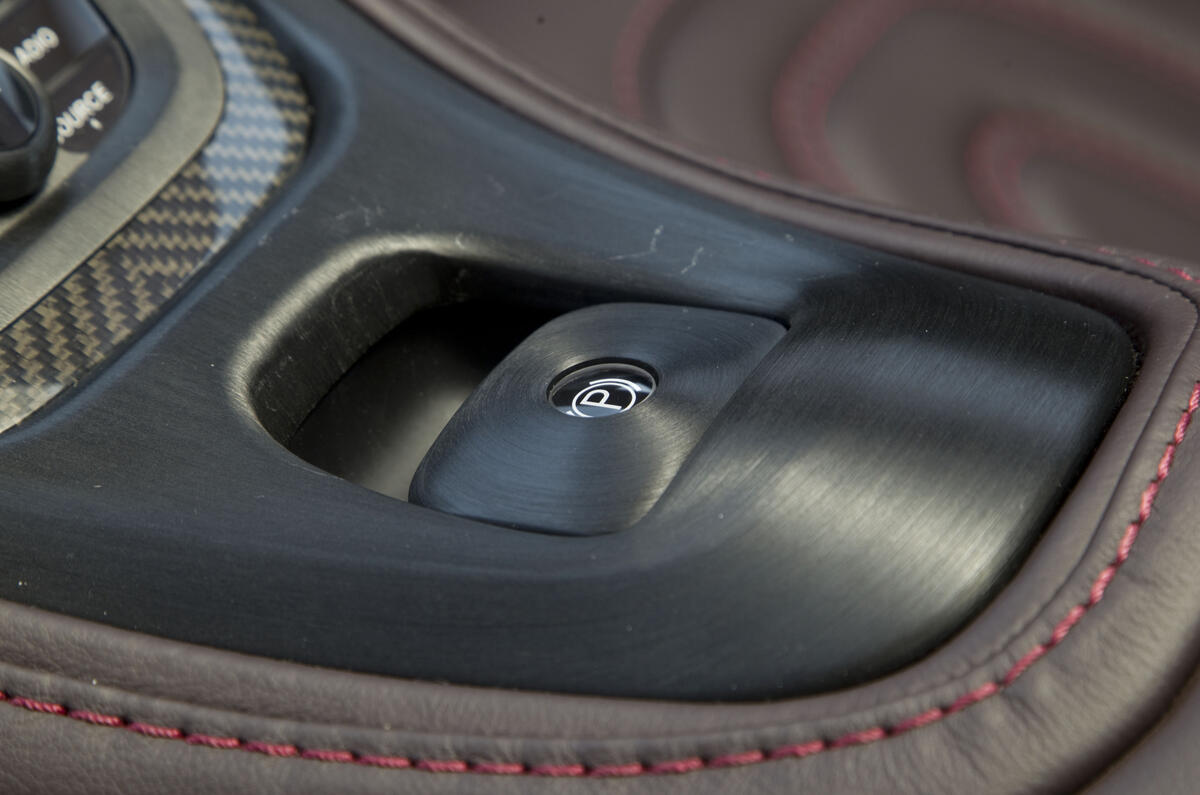

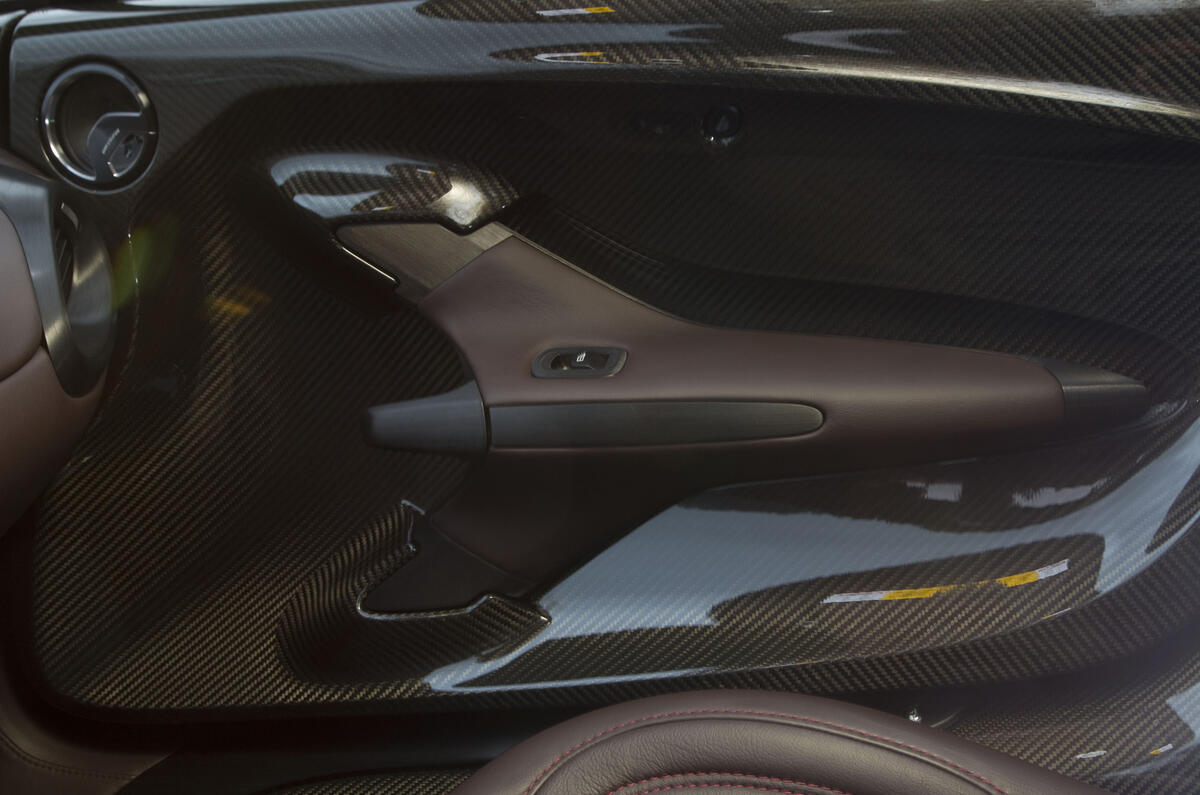
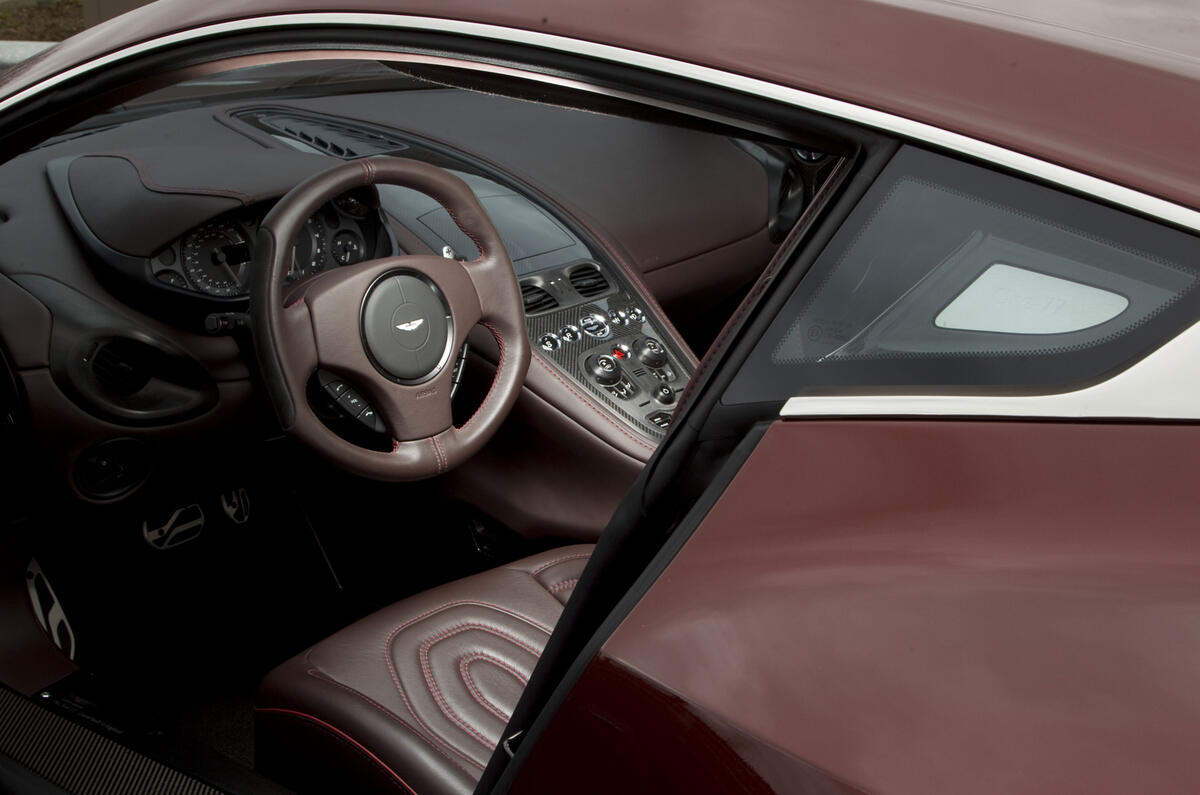
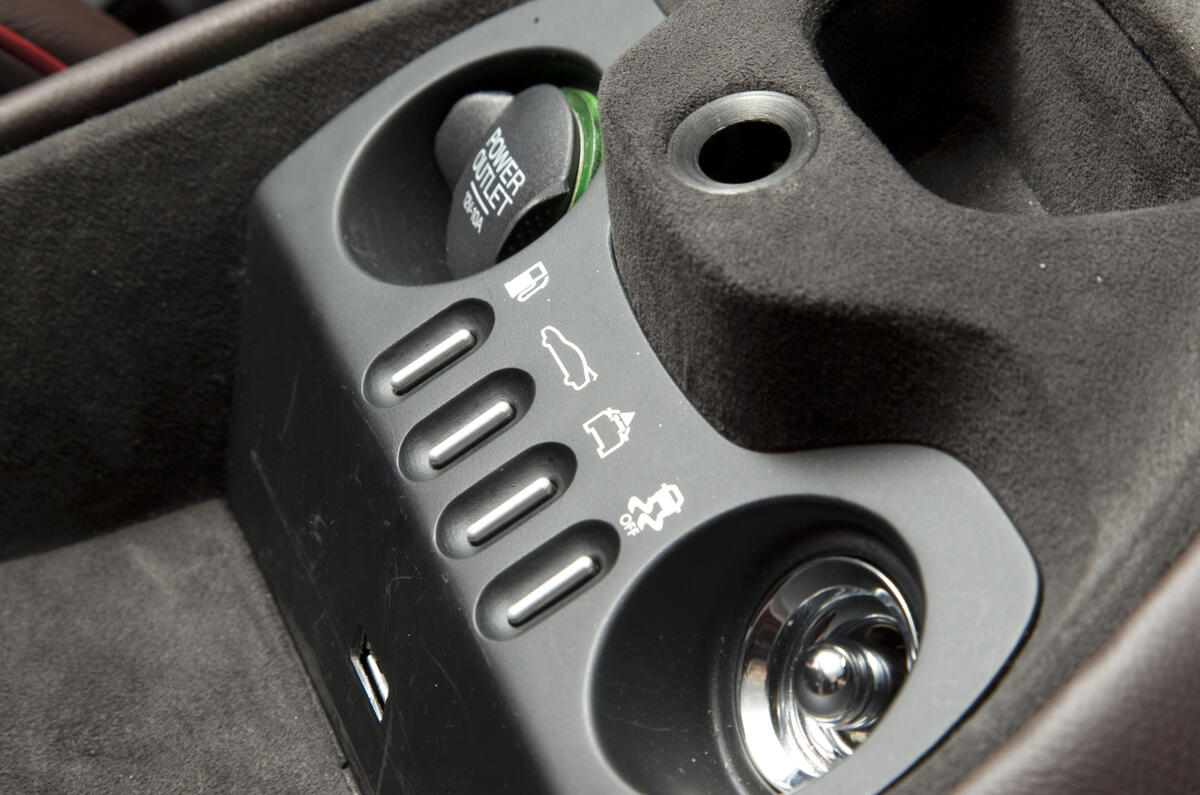



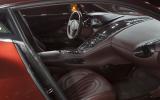
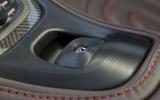


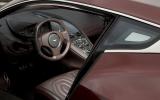
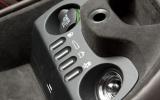






Join the debate
Add your comment
Re: Aston Martin One-77: Riding shotgun
I don't know, luck certainly helps to make money but it obviously is useful in many other spheres of life and I know some wealthy men that I don't consider lucky at all!
Re: Aston Martin One-77: Riding shotgun
I don't consider this as a car in the traditional sense. It is more like an expensive piece of hand crafted jewellery which is closer to art than it is jewellery.
You could argue that there are plenty of other cars out there that will do the same or a better job but that is missing the point.
A rarity for the select few. Good luck to them!
Re: Aston Martin One-77: Riding shotgun
Not allowing any magazine to drive the car before the end of the production does not bode well for Aston guys. Weren't they that confident on their product? It looks like they have no spare money to develop new platforms, new engines, new gearboxes. They have loaned some money last year with a "junk" bond, which is trading in the secondary market like the company has not a bright future. The Virage was an embarrassment, an old DB9 with some makeup. In the medium term, without a strong partnership, it's going to be extremely tough for them.